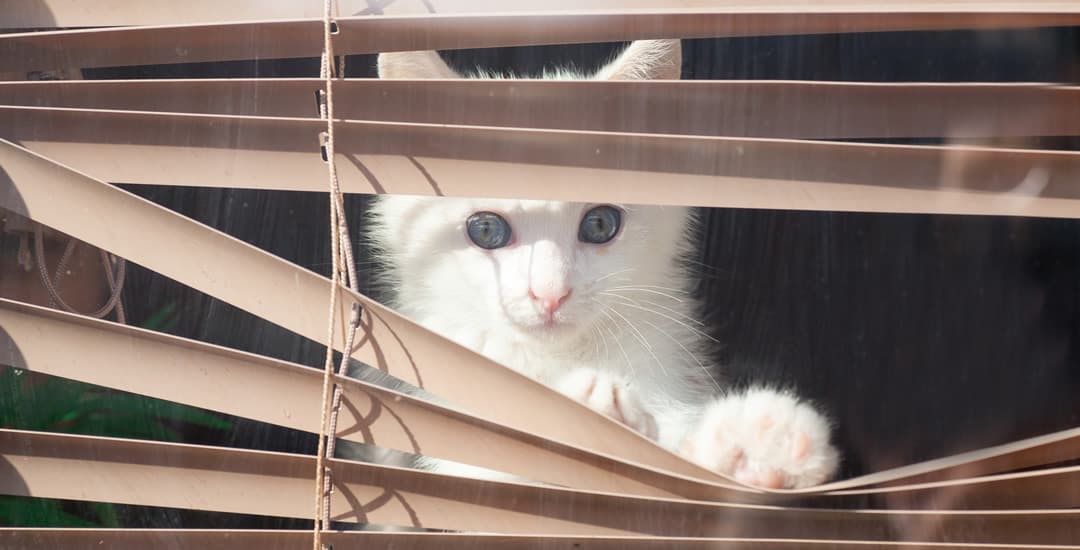
No, blinds aren’t dangerous to cats in the UK today, and it is very hard to imagine a situation in which a window blind of any type could harm a cat in any way; even a cat like mine (Batman, may have mentioned him before) who should be the recipient of some kind of loyalty pass/frequent flier card for the vet.
A lot of the reason why blinds are safe for cats is because they firstly have to be safe for children; the blinds I mean, many cats are quite reasonably not that keen on kids.
Blinds aren’t dangerous to children because we have laws and safety standards in place in order to assure this. The high benchmark for window blinds and child safety that we follow here in the UK also has the additional benefit of making it exceedingly unlikely that your window blinds could possibly harm your cat in any way either.
In fact (and I reckon that most experienced cat people already have either first-hand knowledge or a sneaking suspicion of this), there’s a far greater likelihood of your cat being dangerous to your blind than the other way around.
The short answer to this question then, are blinds dangerous to cats, is “no;” notwithstanding that one cat that could literally do itself an injury in its sleep.
Historically, however, some types of blinds could be considered dangerous to cats, and there are some documented and quite awful accounts to be found online of cats hanging from blinds in the past. But before you panic and start tearing your rollers off the wall, please finish this blog post to learn why this isn’t a problem you’re likely to be faced with today.
For the more anxious pet owners among us, of which I am unfortunately one, I will use this blog post to look in as much detail as possible at any real or theoretical threat or problem a window blind might potentially cause to cats. I will also tell you why modern blinds are considered safe for cats today, while in the past this may not have been the case.
This will ensure that you have absolutely all of the information you might need to make an informed choice on what blinds to buy if you have a cat, and how to keep your cat safe around blinds.
Please note: the information I’ve put together here to cover every possible answer to the question “are blinds dangerous to cats” applies to window blinds sold in the UK and installed correctly, and may not apply to blinds sold in other countries with different safety standards and laws than ours.
Can cats hurt themselves in blinds?
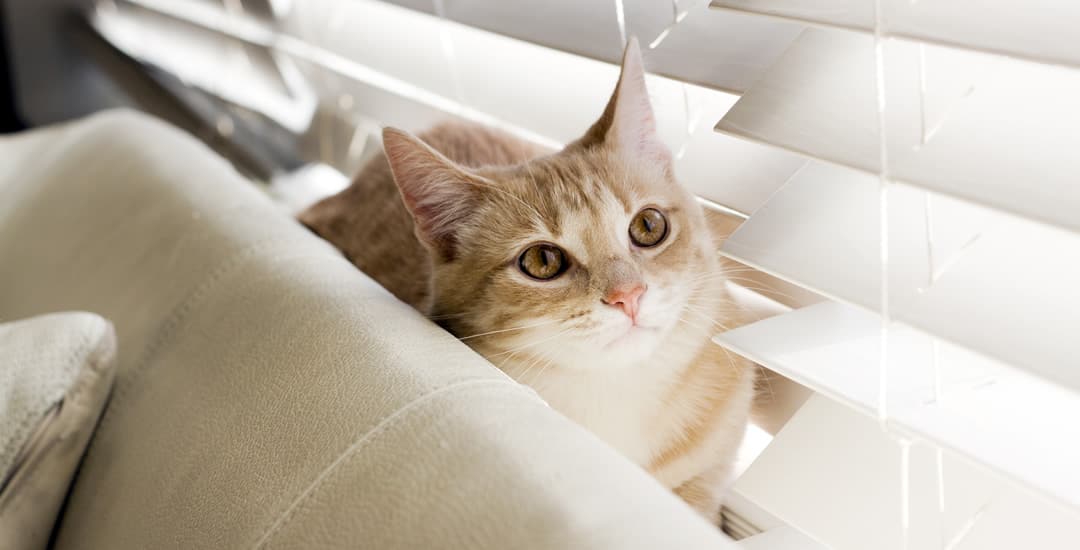
No, or at least, no for 99.999% of cats/blinds. We’ve been in business here at English Blinds since the 1980s, and in that entire time, we have not had one single report of any sort of incident in which a cat got hurt by one of our blinds.
We’ve also never heard of this happening second hand or anecdotally either. (I say “we” here, as I consulted the elders at Blinds Towers about this, they being the ones that have actually been here since the 1980s, when I personally was still in primary school and could only dream about my lofty future career as a window blinds blog writer.)
However, a quick Google search to cast my net further afield revealed that there have been a number of documented incidents in the past (most outside of the UK, but this might just be because most people/cats in the world are outside of the UK) in which cats have hung on blinds. So, that being the case…
Are blinds dangerous for cats if the blind has a loop of cord to raise and lower it, and can cats hang on blinds?
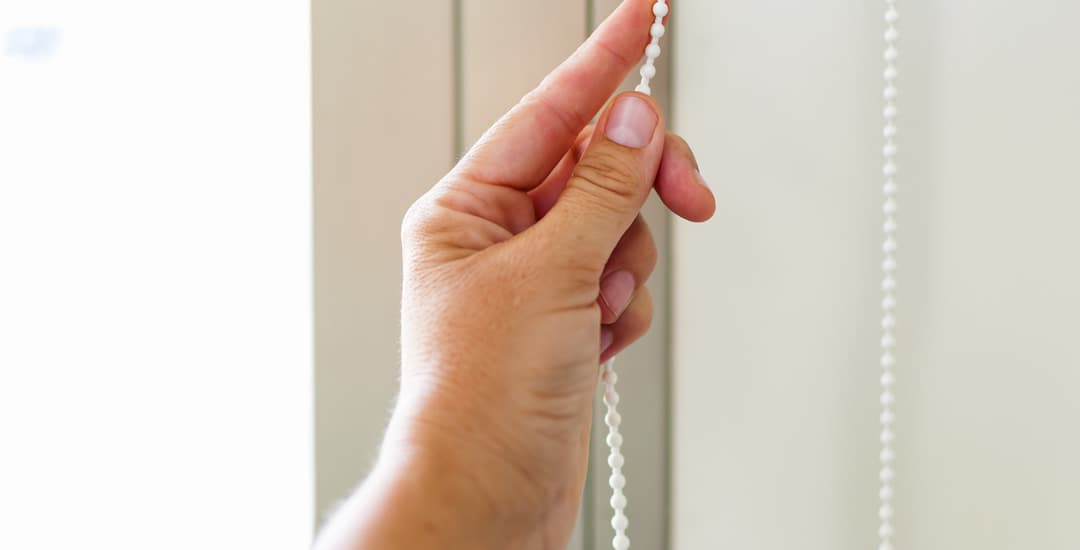
This is perhaps the sort of threat or potential threat that is most likely to spring to mind and concern cat owners in terms of the theoretical danger a blind might pose to a cat.
So, are blinds dangerous for cats if they have cords for operation, and could a cat hang themselves by putting their head through the loop of a blind? No, not if your blind is modern-ish (specifically, bought at any point from early 2014 onwards), and so, conforms to the current relevant UK safety standards.
Today, any blind that is operated by means of a loop of cord has to have either a P-clip to secure the cord to the wall, or a safety breakaway built in to ensure that it doesn’t pose a hanging risk; this latter being a small fitting placed at a break in the cord as a “weak link,” so the cord will separate under pressure. Many blinds will come with both, and the blind’s cord itself should be no longer than is necessary to operate the blind properly.
The P-clip secures the bottom of the loop of the blind’s cord to the wall, so that none of it hangs down loose, preventing a child/cat/your husband if you married “that guy” from sticking their head through it and twisting themselves into an early grave.
When it comes to the breakaway and how that works, operating a blind in the normal manner should be smooth and not require physical strength, and so won’t cause the breakaway to activate; but if you tug on the cord, or if your children pull hard on the cord, the cord will separate to ensure that it doesn’t form a noose-like loop that could hang or strangle a child (or cat).
Now, cats are far more likely to bat a hanging control cord around with their paws (particularly if it’s swaying in a breeze) than they are to stick their head through it; but either way, a P-clip prevents them from being able to do that, by means of stopping them from putting their head/paw into and twisting the loop in the first place.
When it comes to the breakaway, even if your cat was weird enough (or honestly, possessed enough) to stick their head through the loop and spin in circles so that it tightened around their neck, if and when they change their mind and yank their head backwards or otherwise struggle to get free, the breakaway will break and allow them to do that.
You only need either a P-clip or a safety breakaway in a blind’s cord to make it safe for cats/kids, not both features; but many blinds will come with both for added reassurance. For instance, our cat-safe roller blinds come with a P-clip too, even though they have a breakaway built in.
Can cats hurt themselves in blinds if I don’t fit/use the P-clip (if supplied)?
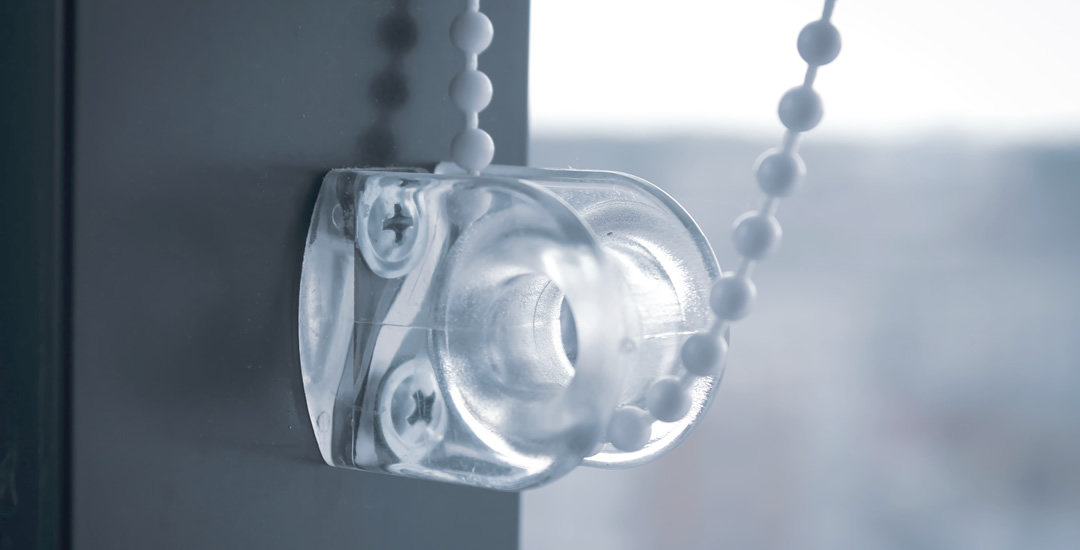
Yes, failing to fit or use the P-clip or cord tidy for blinds that need it totally negates this safety feature unless the blind has a breakaway too, and that could cause the blind to pose a risk to your cat.
It is really important to note that if your blind came with a P-clip rather than a breakaway, the safety of the blind for your cat, child, stands or falls on you fitting that P-clip and using it as intended.
In the unlikely event (we double check every blind that we ship to ensure that a P-clip is present with blinds that need it) that a blind comes with the P-clip missing (and doesn’t have a breakaway instead) contact the blind’s seller/manufacturer immediately to get a replacement, and don’t fit the blind until you have it.
Are blinds dangerous for cats if the blind has a cord but doesn’t have either a breakaway or a P-clip at all?
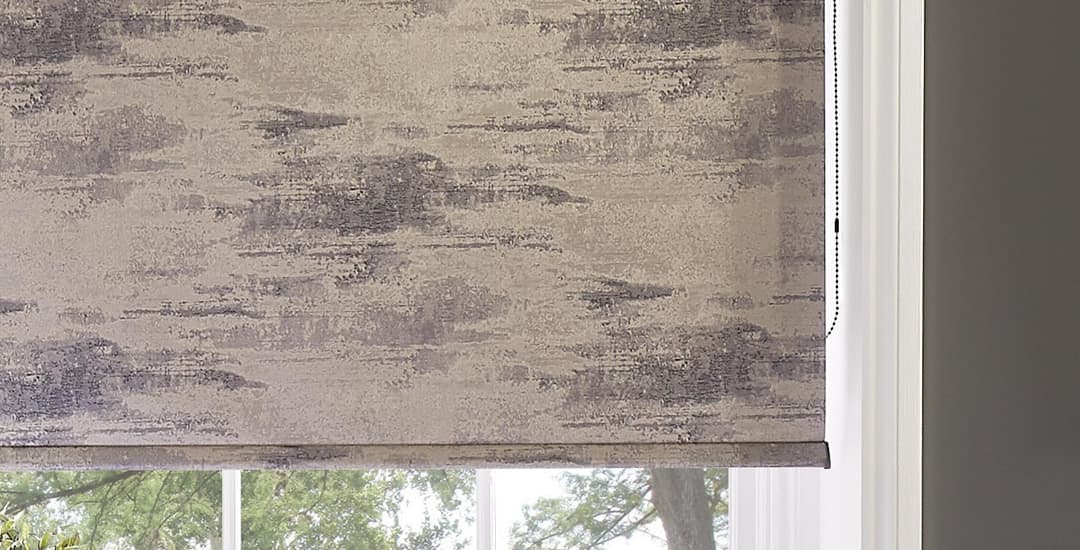
Yes, these blind cords could be dangerous for cats if their control cord forms one uninterrupted loop without a breakaway, and isn’t secured with a P clip either.
Still, many blinds made pre-2014 featured a breakaway or P-clip where this would have improved safety anyway, even though this wasn’t mandated in the safety standards at that point; but some older blinds will definitely be missing this.
If you do have an older blind and this blind doesn’t have a breakaway in the cord or a P-clip fixing to keep it secured to the wall, this could potentially make it a hanging risk for your cat, and I strongly suggest replacing it asap.
This does also apply if you bought your blind from abroad and/or there’s any chance it was imported in a questionable manner/bought from a dodgy website or shop and so, bypassed the relevant safety standard, for the same reason.
Are vertical blinds dangerous for cats due to their connecting chain?

Vertical blinds are constructed of individual fabric louvres, each of which has a weighted bottom with a little lug on either side, by means of which a beaded chain passes the entire length of the blind to hold the louvres together neatly.
If you have a vertical blind, I guess a cat could theoretically get a paw trapped in the connecting chain that holds the louvres at the bottom of the blind together if they were playing with it and managed to twist the chain around their leg/foot. I honestly don’t see how personally, but there was a post about it on Reddit, so definitely plausible… And to be clear, this connecting chain poses absolutely no risk of hanging/choking, as it doesn’t form loops and is secured to each louvre.
If the connecting chain is a concern for you (albeit I honestly can’t see it being a real risk), you can actually ask us for your vertical blind to be made without the little lugs on the bottom of each weighted louvre to hang the connecting chain to, which is a request we do get now and then for people who prefer the appearance of vertical blinds without the chain.
If you already have a vertical blind and are concerned about the connecting chain (and don’t trust me when I tell you that I don’t think you need to be) you can also remove the chain yourself.
The connecting bottom chain of a vertical blind is only present at all to stop the louvres from tangling in a brisk breeze, or if the blind is opened very sharply; it’s not integral to the blind’s functionality.
Are blinds dangerous for cats in any other ways?
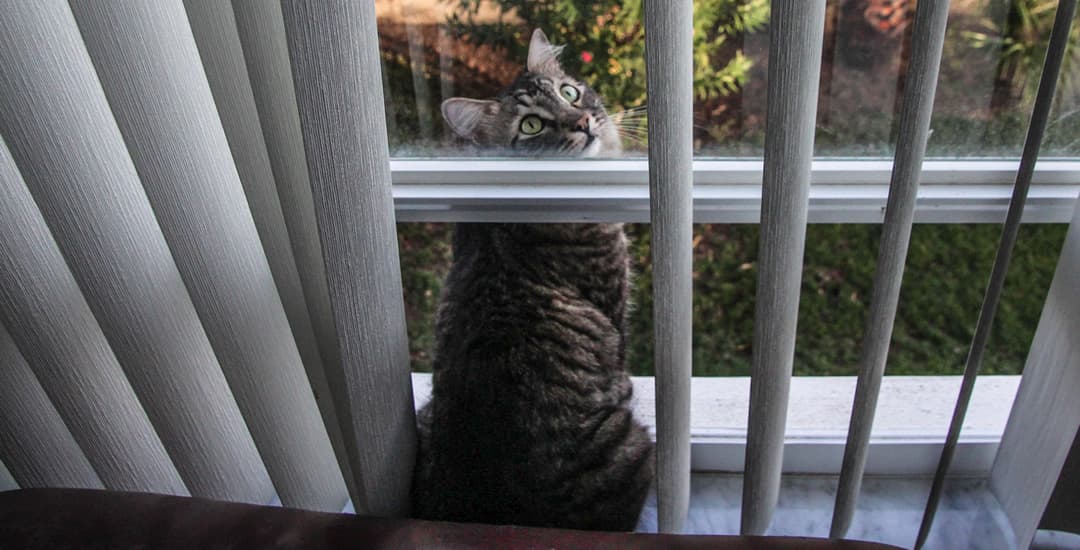
If I was trying to create an urban legend about window blinds eating cats, the best or rather, only theoretical issues/threats that I can come up with using my famously vivid imagination are:
- If you have a very old blind or bought a blind outside of the UK (or if it was illegally sold on or to the UK market) that otherwise doesn’t reach the current relevant UK safety standards that all blinds need to be certified as complying with.
These safety standards are concerned with ensuring child safety around blinds, but more generally, that blinds are safe and not a threat to any other person or thing either.
- If you bought a cheap Venetian blind (or have one that’s getting on in years and is very battered) that’s made of aluminium, the thin slats might have or develop sharp edges. Still, unless your cat maybe licked it and cut their tongue, I still can’t see that it could possibly harm them, even if your cat climbed clean through the slats or attempted to climb up them.
- If you had a large/heavy blind that was either not secured to the wall properly, on a wall not strong enough to hold it, or that had somehow worked loose over time by means of kids yanking it about and the blind fell, this could then potentially injure a cat or anything else in the path of its descent.
I mean seriously though, that’s it, and bear in mind that I made these up, they’re not things that have ever happened to the best of the knowledge of myself, everyone else here, and even a passing fabric rep serving the industry who visits a lot of blinds companies every month.
Are blinds dangerous for cats if the cat climbs in/through the slats?
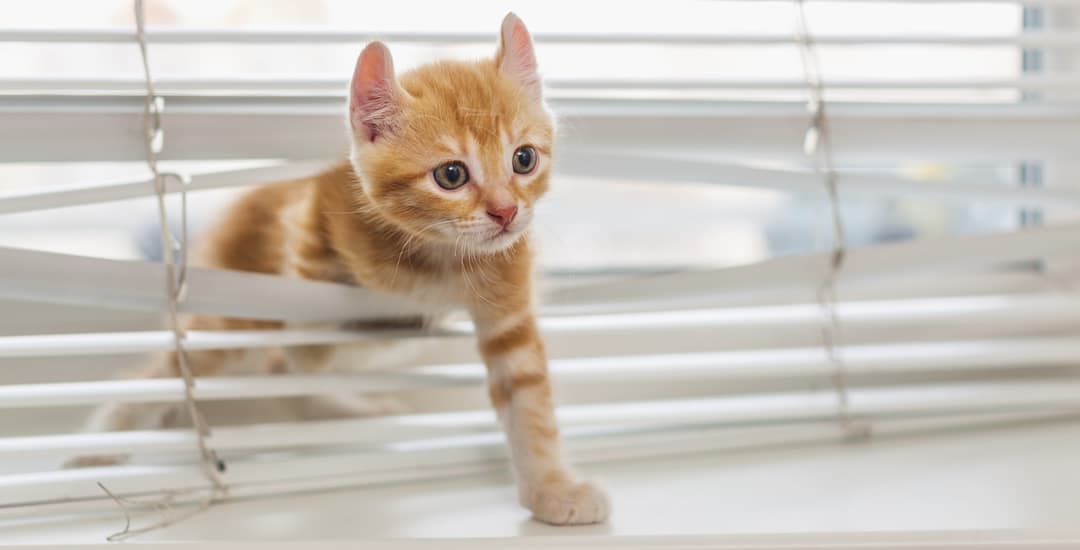
In my theoretical advice for aspiring horror writers on how a blind might kill or seriously injure a cat, I did mention a vanishingly unlikely and abstract scenario in which the sharp edge of a slat on an old or shoddy Venetian blind might be able to deliver the equivalent of a paper cut, should the cat try to climb through or up the slats.
This has never happened in real life as far as anyone I have asked knows, and really even my own cat (who is kind of a jackass) has never tried to push himself through the slats of my Venetian blind, despite it being on one of his favourite windows.
However, Google gives me to believe that some cats do actually do this, and I can see it being appealing if there was a fly or something on the other side that they were intent on pouncing on with extreme prejudice.
What happens in such instances though is that the cat batters and potentially damages the blind rather than the other way around; aluminium is lightweight and if you knock it about or deliberately pull the slats apart, it will potentially dent or buckle under the pressure.
When it comes to the other sorts of slatted blinds, being wood and faux-wood respectively, this is a non-issue as the slats are far too rigid/solid for even a very hench and determined cat to get through. (Maine Coons and Norwegian forest cats spring to mind…)
Can cats catch a claw in fabric blinds?
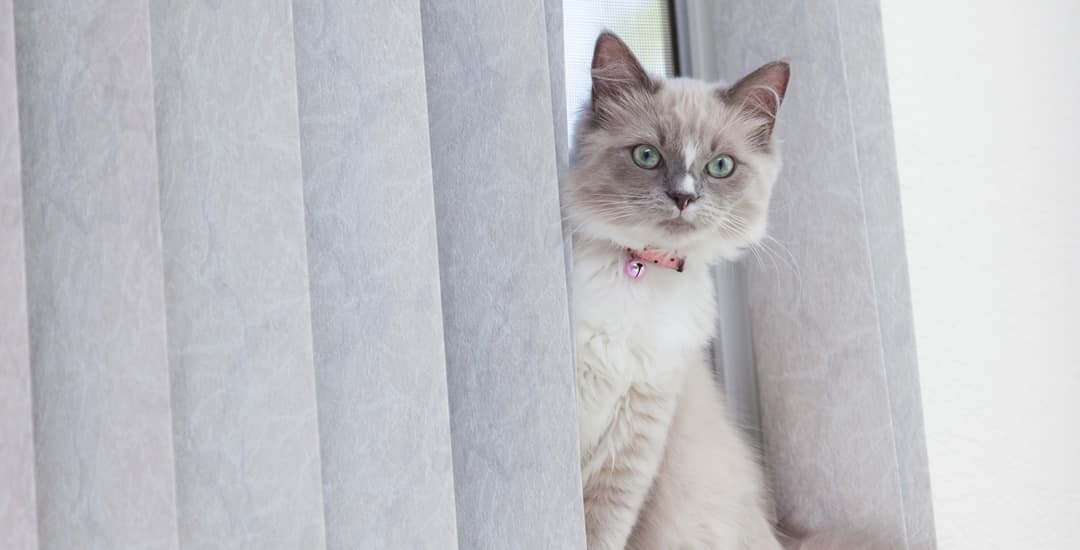
If your cat is the type to shred fabrics, climb them, or swat at things, you’ve probably seen them get their claw caught in something before, leading to a massively dramatic overreaction that involves yanking themselves backwards and throwing themselves about in order to free said claw.
Can cats catch a claw in fabric blinds like Roman, roller, vertical, and day and night blinds though? Yes, this could happen just as it could with any other fabric your cat claws at, like a fabric sofa, rug, or the passing leg of someone they’re not a fan of.
However, if they do this, they’re not likely to get themselves into any major difficulties any more than they would by catching a claw on another type of fabric.
A sharp enough pull on the part of the cat and their claw will come free. If they really are super-dramatic about this, I suppose the yanking motion could cause them to fall off the windowsill; but unless you got a faulty cat, they will then land on their feet and walk off, unharmed but embarrassed.
If I did want to circle back to my fatalistic “but what if” game about whether blinds could hurt cats, I might stretch to say that the cat could fall out of an open window if they were on the reverse of the blind and the window was open? But again, this level of fatalism is kind of ridiculous, even for someone as anxious as me.
One thing I will say is that if your cat does climb or claw at your fabric blinds, either because they’re using them as a scratching post or just to wind you up, this will possibly damage the fabric of the blind itself.
A claw could go through a blind and potentially ruin the blind’s appearance if it happens enough times, and this may also result in those claw holes allowing little pinpricks of light through the blind in the future too, or resulting in areas being shredded into slits.
This will be particularly annoying if your blind is or rather, was a blackout blind until your cat decided to remodel; but again, this is a first world kind of problem rather than a felicide kind of problem.
Can cats get trapped in blinds?
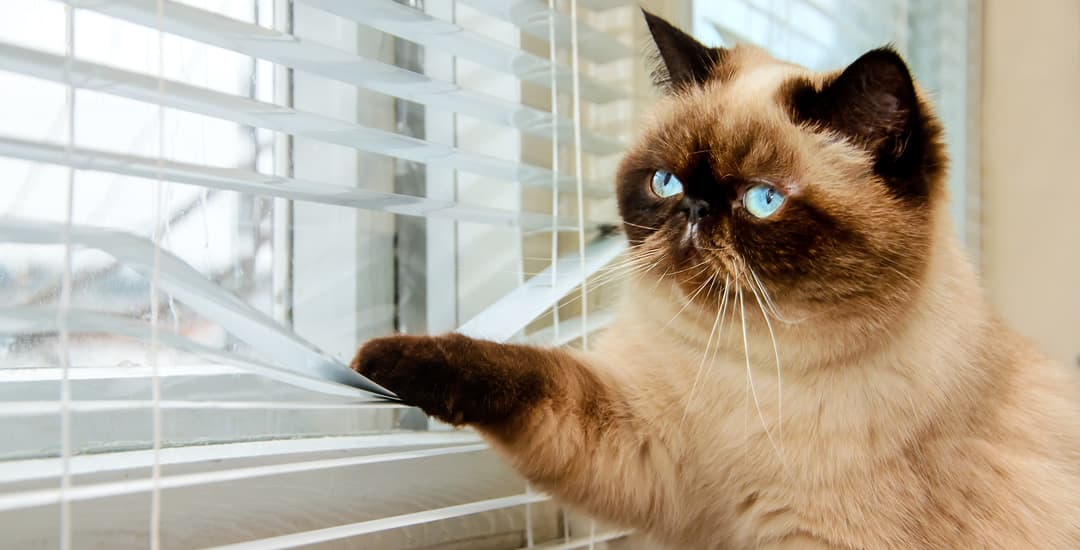
This could theoretically happen if your cat is one that wants to climb through or stick their head through the slats of a Venetian blind, and if your cat managed to push through the closed louvres of a vertical blind and then be unable to see their way back out, they could get trapped on the wrong side of the blind.
However, I cannot imagine a cat being unable to get free from the blind itself, as the slats of a Venetian blind will simply buckle under the sort of weight of the average cat, allowing them to wriggle out or drop free.
How do I protect my cat from blinds?
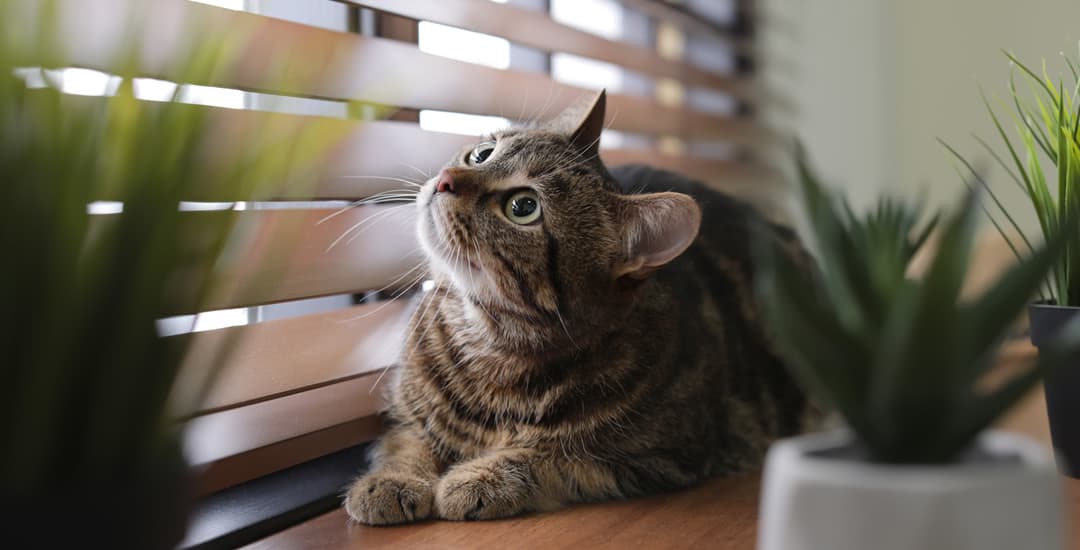
Really, a far better question here is how do you protect your blinds from your cat, but that’s a topic for another blog post.
My basic advice on how to keep cats safe around blinds is really just common sense:
- Ensure that your blind conforms to the latest relevant British Safety Standard (which is EN 13120 at the time of writing, September 2022) and double-check that it has a breakaway or P-clip present if it has a control cord.
- Check your blinds over for any signs of wear or damage now and then; for instance, sharp edges on Venetian blinds, or hanging/loose stitching or hems on Roman blinds that your cat has already been attacking!
- When hanging your blind (particularly if it is large/heavy) ensure that you do this in accordance with the directions provided and vitally, ensure that the blind isn’t too heavy for the wall or fittings and so, won’t pose the risk of coming loose and falling from the wall.
- If you do ever notice that your blind’s headrail appears to have moved from its position snug against the wall, or you can feel give from the top when the blind is in operation, resolve this immediately to prevent a possible accident.
- Where possible, leave blinds open during the day so that your cat can see out without having to try to get past the blind, particularly on their favourite window/windowsill.
- Try to discourage your cat from paying undue attention to your blinds; don’t play peek-a-boo (or “if I catch your finger I will bite it”-a-boo) through a blind’s slats, and always provide a scratching post so that your cat doesn’t go off in search of alternatives like blinds.
- If your cat does seem keen on climbing the blinds, try to make this harder for them in terms of keeping things they could be using as a jumping off point around the window somewhere else.
What blinds are good for cats?
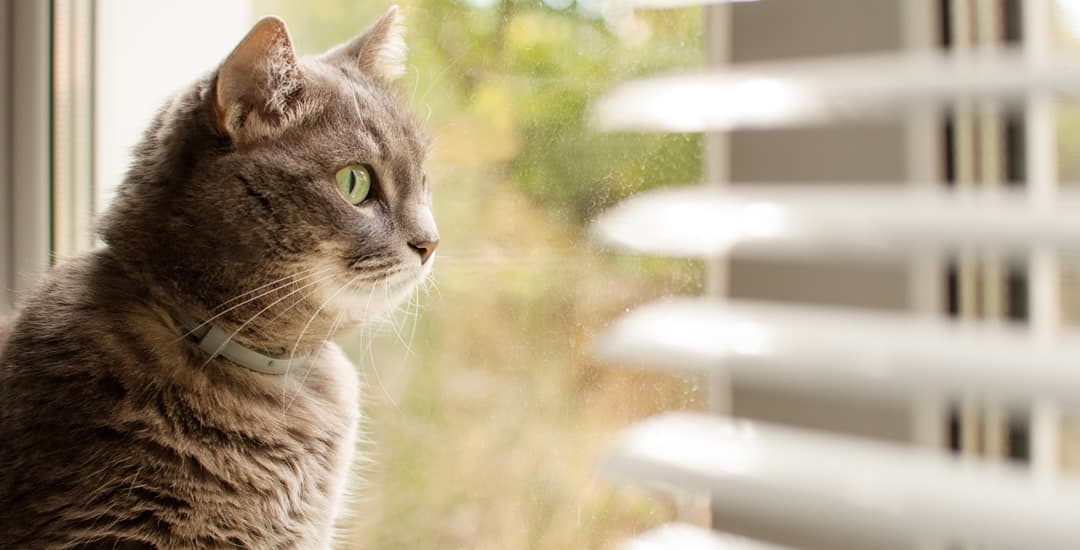
The best blinds for cats are blinds that your cat isn’t going to pay much mind to and also, that they won’t be able to damage with ease. For this reason, I’d suggest wooden or faux-wood blinds as opposed to fabric blinds; Venetian blinds are another option, but some cats can and will push their way through the slats.
For fabric blinds, roller blinds are probably going to be the least interesting to cats and so, least likely to get savaged or damaged with ease.
All blinds legally sold in the UK are safe for cats; and in terms of the potential risk of cat to blind rather than the other way around, the world is your oyster if your cat is the trustworthy (or lazy) type anyway.




